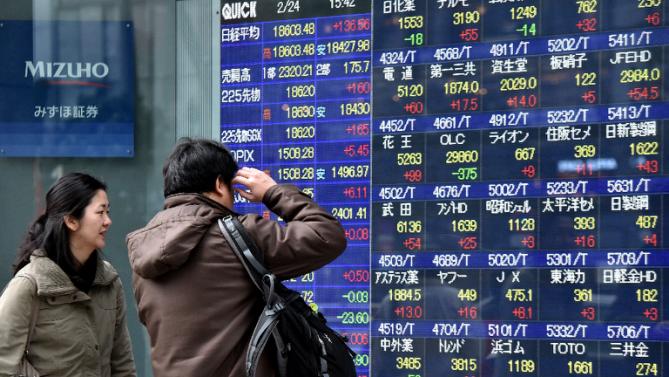Asian markets cheer end of US debt uncertainty
MSCI Asia ex-Japan +1.2% as (KRX:KOSPI) and (HKG:HSI) advance; gold USD 2,416 rally signals hedged optimism post-US shutdown deal.

Asian markets rallied after the U.S. Senate approved a bipartisan budget resolution ending the federal-shutdown impasse, triggering a global risk-on rotation. The MSCI Asia ex-Japan index gained 1.2%, while gold prices climbed 0.9% to USD 2,416/oz as investors hedged duration risk. The synchronized move reflected relief that fiscal operations in the world’s largest economy would normalize, averting spillovers to global funding markets.
Mechanistically, the resolution preserved U.S. discretionary spending at USD 1.7 trillion and extended debt-ceiling suspension through 2026. This reduced immediate default fears but implied continued Treasury issuance, keeping U.S. yields elevated near 4.55% (10-year). Asian sovereigns benefited from stabilized risk premiums; the JP Morgan Asia Credit Index narrowed 6 bps, led by Korea and Indonesia.
Equities in export-reliant markets responded strongly. The Kospi (KRX:KOSPI) rose 1.5% as semiconductor exporters priced renewed U.S. demand. The Nikkei 225 advanced 0.8%, and the Hang Seng (HKG:HSI) added 0.9%. However, currency moves were mixed: the JPY weakened to 151.2 per USD as safe-haven unwinding resumed, while the INR and THB strengthened modestly on carry inflows.
Gold’s concurrent rise reveals underlying caution. Real yields remain historically low, and central-bank net purchases continue to anchor demand; Asian official buyers added 42 tons YTD. The dual rally in equities and bullion thus reflects tactical relief rather than structural optimism.
Macro linkages suggest Asia’s outperformance may persist if U.S. fiscal normalization anchors global growth expectations. Regional manufacturing PMIs have rebounded above 50 for three consecutive months, with new export orders up 3.8% q/q. Earnings revisions for MSCI Asia ex-Japan are trending positive for the first time since 2022, implying EPS growth near 10% in 2026.
From a capital-flow lens, global funds added USD 4.3 billion to Asian equities in the week ending 11 November, reversing five weeks of outflows. Bond inflows were modest at USD 700 million, concentrated in high-grade Korea and Singapore paper.
Historically, such relief rallies fade unless anchored by domestic demand. Yet this episode differs: Asia’s balance-sheet strength is robust, with regional current-account surpluses averaging 2.1% of GDP and external debt ratios below 40%.
Over the coming quarters, institutional investors will watch U.S. fiscal-sustainability debates and 10-year yield trajectory. A sustained range of 4.25–4.50% could keep Asian currencies stable while supporting equity valuations via lower discount-rate volatility. If regional EPS growth materializes and MSCI Asia trades back above 13.5x forward P/E by mid-2026, it will confirm that Asia’s cyclical upswing has transitioned into durable capital-market normalization.





